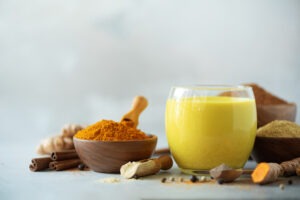Ingredient Spotlight: Policosanol
Ingredient Spotlight: Policosanol
Beyond Cholesterol: How Policosanol Supports Cardiometabolic Vitality
Introduction
Policosanol has long been a fascinating ingredient in the nutraceutical world, as a natural compound extracted primarily from sugarcane wax. For years, it’s been celebrated for its potential to promote healthy cholesterol levels, and even impact the activity and function of HDL particles, often call “good” cholesterol. But like most stories, its path is winding; marked by promise, debate, and a call for clarity. Early studies, particularly those from Cuba, painted a picture of dramatic improvements in cholesterol profiles. More recent research, however, has added layers of complexity to the story, shifting the focus from merely impacting LDL-C levels and instead, enhancing how well HDL particles works in our bodies.
Composition and Sources
At its core, policosanol is a blend of long-chain alcohols, with octacosanol typically making up the lion’s share of the mixture, and lesser amounts of triacontanol and hexacosanol. These compounds, with carbon chains stretching 24 to 34 atoms long, are commonly derived from sugarcane, but you can also find them in beeswax, cereal grains, and even some fruits and nuts. Each source, with its own unique properties, contributes subtle variations that are thought to impact the overall potency and efficacy of the extract.
Enhancing HDL Functionality
The real intrigue with policosanol lies in its potential effects on HDL, the so-called “good” cholesterol. For many years, the focus was on simply increasing HDL levels, but scientists have come to appreciate that HDL is much more than a number on a lab report. It is a dynamic particle, actively involved in removing excess cholesterol from our arteries, dampening inflammation, and even fighting oxidative stress. Some studies suggest that policosanol may enhance these functions by inhibiting cholesteryl ester transfer protein (CETP). By slowing down CETP’s activity, policosanol can help reshape HDL particles, making them larger and more efficient, which research shows is a promising mechanism for supporting cardiovascular wellness.
Navigating Controversies
Yet, the path to these benefits is not without controversy. While Cuban studies have frequently reported significant positive outcomes, demonstrating improved HDL functionality and more favorable lipid profiles, research conducted outside Cuba has not always mirrored these results. Some rigorous, double-blind trials have found little to no effect on cholesterol levels, raising questions about whether differences seen in research (e.g. study design, population characteristics) or even with the ingredient, with specific sources of policosanol thought to influence the outcomes.
Practical Considerations and Future Directions
For those interested in heart health, the journey with policosanol is both promising and complex. Its potential to improve HDL function suggests a unique approach to supporting cardiovascular wellness, going beyond merely altering lipid levels. However, mixed results indicate that the benefits of policosanol may be modest. It is likely best utilized as part of a broader strategy that includes a combination of synergistic ingredients. When formulating with lipid-soluble ingredients, options are often limited to either single ingredients or combinations with other lipid-soluble, cardioprotective substances, such as CoQ10.
Looking ahead, ongoing research is expected to refine our understanding of optimal dosing, long-term benefits, and possible synergies with other nutraceuticals.
Conclusion
Policosanol remains a promising, yet somewhat controversial, candidate in the realm of cardiovascular health. Its potential to enhance HDL functionality offers a unique angle of cardiovascular wellness, yet the mixed study results call for cautious optimism, and creative formulating.
Key Points:
- Lipid Regulation: Policosanol may lower LDL and raise HDL cholesterol, though findings vary across studies.
- Cardiovascular Effects: Preliminary data suggest improvements in circulation and blood pressure, pending robust confirmation.
- HDL Functionality: Its enhancement of HDL’s protective capacity is a notable attribute requiring broader validation.
- Sustainability: Renewable sourcing and green extraction methods support its environmental viability.
As we continue to unravel the complexities of HDL and its role in protecting against heart disease, a holistic approach that combines natural supplements, lifestyle adjustments, and professional medical guidance appears to be the most prudent path forward.



